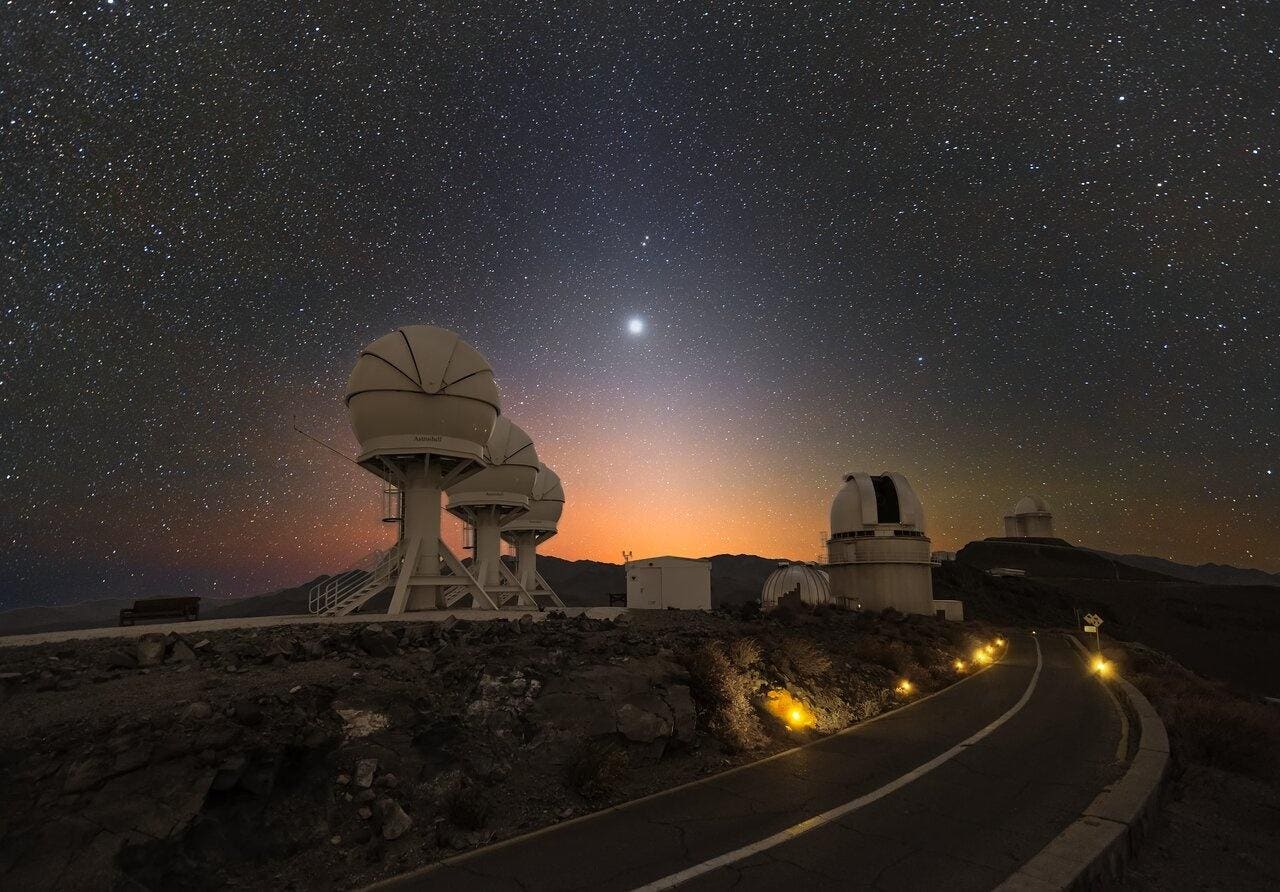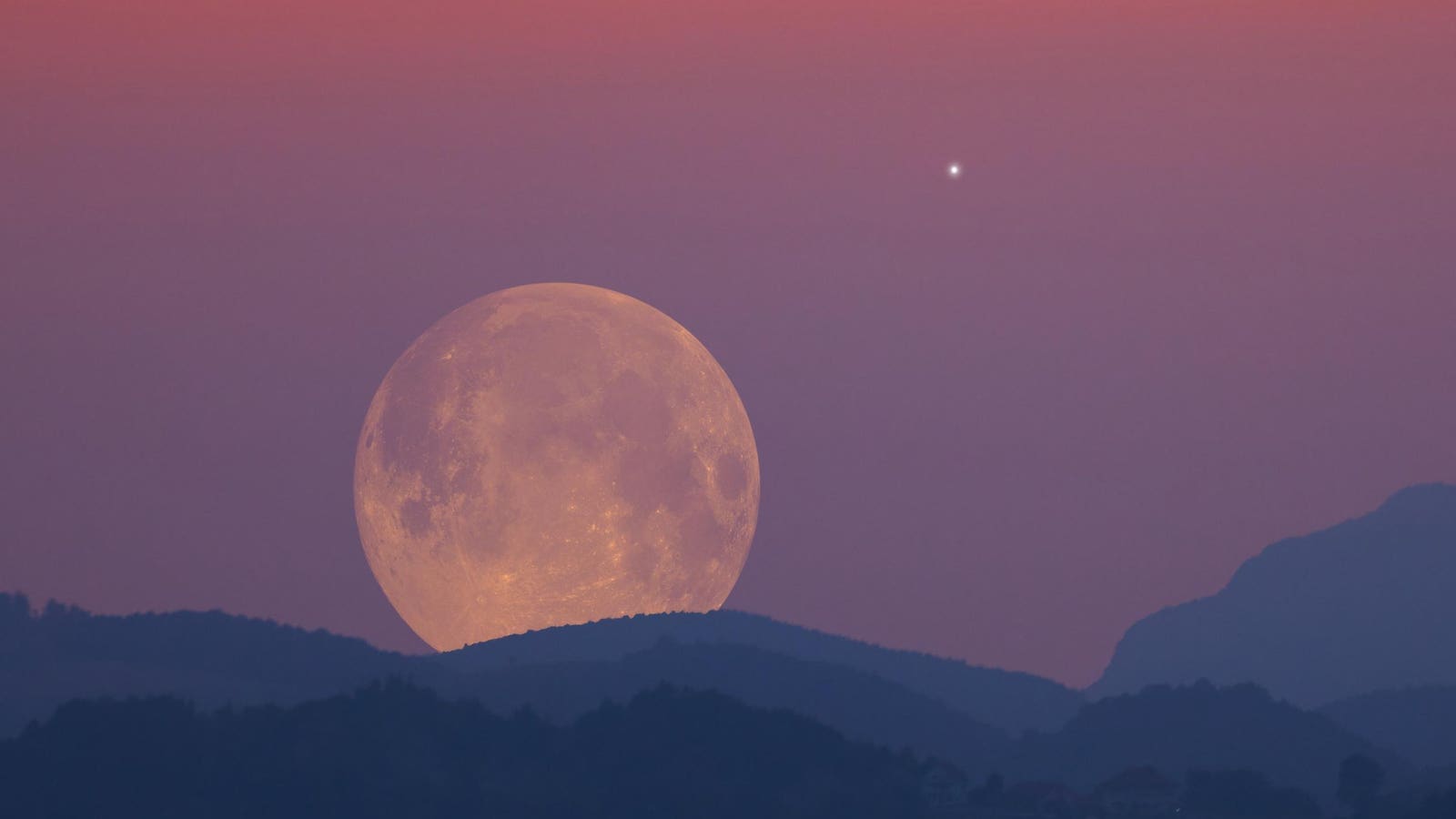Venus is shining brightly over the European Southern Observatory’s La Silla Observatory in Chile.
Each Monday, I pick out North America’s celestial highlights for the week ahead (which also apply to mid-northern latitudes in the Northern Hemisphere). Check my main feed for more in-depth articles on stargazing, astronomy, eclipses and more.
The Night Sky This Week: July 28-August 3, 2025
July ends, and August begins with a waxing crescent moon that continues its evening journey past Mars and through Leo while the very early hours offer a rising tide of meteor showers. Two minor showers — Delta Aquariids and Alpha Capricornids — reach their peak midweek, delivering a steady stream of shooting stars, especially for southern observers. By week’s end, the moon performs one of its closest passes to Antares this year. Here’s everything you need to know about stargazing and astronomy this week:
Monday, July 28: Moon And Mars
Monday, July 28: Moon And Mars
About 45 minutes after the sun dips below the horizon, a 19%-illuminated waxing crescent moon will appear in the west just to the left of Mars. The two solar system objects will be separated by only about one degree.
Tuesday, July 29: Meteor Showers Peak
Two overlapping meteor showers — the Delta Aquariids and the Alpha Capricornids — both reach their peak tonight. The Delta Aquariids may produce up to 20 meteors per hour, while the Alpha Capricornids can add another 5 to 10. As luck would have it, the waxing crescent moon will set relatively early, leaving the sky dark for most of the night. For best viewing, head to a dark location and face generally southeast or south after midnight for the best chance to catch long, lingering Delta Aquariids and bright Alpha Capricornids.
Wednesday, July 30: Moon Near Spica
Wednesday, July 30: Moon Near Spica
Now about 36%-lit, the waxing crescent moon will be positioned just a degree from Spica, the brightest star in Virgo. This blue-white binary star lies about 250 light-years away.
Friday, August 1: ‘Morning Star’ Venus Peaks
Look east 45 minutes before sunrise to see Venus at its highest point —about 25 degrees above east — during its current apparition as the “Morning Star.” It will shine brilliantly at –3.9 magnitude in the outskirts of the constellation Orion, “The Hunter.”
Sunday, August 3: Moon And Antares
Sunday, August 3: Moon And Antares
From most of North America, the moon will appear to pass incredibly close to Antares, the brightest star in Scorpius. The moon regularly passes close to Antares, Aldebaran, Regulus, and Spica due to their location near the ecliptic, which the moon’s orbital path around Earth closely follows and often intersects.
The times and dates given apply to mid-northern latitudes. For the most accurate location-specific information, consult online planetariums like Stellarium.
Wishing you clear skies and wide eyes.









